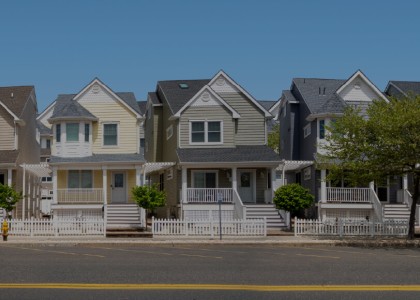Federal, state, and local governments could reduce CO2 emissions from cement manufacturing by 7.3 million metric tons annually by shifting half of their concrete purchases for public construction projects to a lower-carbon alternative, a report released today finds. Read the ReportThe American Council for an Energy-Efficient Economy (ACEEE) and Global Efficiency Intelligence (GEI) study examines the greenhouse gas reduction potential of limestone calcined clay cement and concrete as alternatives to their conventional counterparts and recommends strategies to enable and support their adoption.
The report’s release comes as the U.S. Department of Energy on Monday announced it was funding three industrial demonstration projects for the production of limestone calcined clay cement.
The manufacturing of cement, a key ingredient in concrete, is one of the most carbon-intensive industries, contributing around 7% of global carbon dioxide emissions. Using calcined clays can cut emissions and reduce costs by
- Replacing a portion of portland cement with ground limestone and calcined clay to produce limestone calcined clay cement, or
- Substituting calcined clay—a supplementary cementitious material (SCM)—for portland cement in concrete.
The new report calculates that CO2 emissions reductions of 7.3 million metric tons—up to 9% of the U.S. cement industry’s total emissions—are possible based on transformative (50%) market adoption rates of limestone calcined clay cement instead of portland cement; this reduction would result from government procurement alone. This is equivalent to eliminating the greenhouse gas emissions from driving 1.7 million gasoline-powered passenger vehicles for one year.
If the private market adopted limestone calcined clay cement at these same levels, the total impact could be doubled, resulting in total CO2 emissions reductions of 15.9 million metric tons, the report finds.
Ali Hasanbeigi, research director at GEI and a report coauthor said: “Government procurement, which accounts for almost half of the cement demand in the U.S., is an important driver in creating demand for low-embodied-carbon concrete and facilitating its use in public projects. This incentivizes emission reductions in cement manufacturing. This, in turn, will have a spillover effect to lower the embodied carbon in cement used in private construction as well.”
Pavitra Srinivasan, senior manager at ACEEE and a report coauthor said: “Using limestone calcined clay cement and releasing fewer carbon emissions to begin with is a better path than making cement the traditional way and needing to remove carbon at the end of production. States can start preparing now to be ready to use this new process to cut air pollution, improve public health, and help spur the private market to shift.”
The analysis, which uses 2021 data on cement use and does not include the benefits of future cement kiln electrification, assumes the CO2 intensity of limestone calcined clay cement is 40% lower than the CO2 intensity of portland cement. Evaluating cement production and consumption in each state, the report finds that Texas, California, and Florida have the greatest opportunities for emissions reductions through government purchases of low-embodied-carbon concrete.
In the future, limestone calcined clay cement could be produced with clean electricity rather than by combustion of fossil fuels, since it requires far lower temperatures (800oC) than portland cement (1500oC). If manufacturers incorporate material efficiency from clays, energy efficiency, electrification, thermal storage, and renewable or clean energy to fuel the production processes for ground limestone, calcined clays and portland cement, the total emission reduction potential can approach 80% or higher in zero-emission scenarios as these technologies mature over time.
Concrete producers often substitute portland cement with other SCMs to reduce costs and carbon emissions, most commonly fly ash sourced from coal-fired power plants and ground-granulated blast-furnace slag from steelmaking. However, the supplies of these SCMs are set to decline as coal-fired power retires and steel production processes change. In contrast, limestone and calcined clay are abundantly available raw materials. Limestone calcined clay cement has been tested and found to reach the performance and durability of conventional cement. It also costs as much as 25% less to produce than portland cement due to energy and material savings.
The report calls on governments and cement and concrete companies to support further testing and demonstrations of limestone calcined clay cement and concrete to improve market confidence and help speed its adoption in the United States. It recommends, among other actions, offering tax incentives, refining standards to guarantee the quality and uniformity of the product and improve emissions reduction potential, and establishing government procurement guidelines that emphasize the use of limestone calcined clay cement alongside other low-embodied-carbon sustainable building materials.



